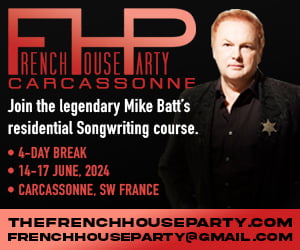
Lists & Opposites: technique feature in Songwriting Magazine Spring 2019
Founder of The Song Foundry, Ed Bell presents us with two powerful lyric-writing techniques: creating list lyrics and using contrast
There are lots of great ways to write and structure a lyric. Sometimes, if you come up with a strong or motivating song idea, the lyric flows out pretty quickly or comes together on its own after a few different drafts. But in this article, I want to talk about two really powerful techniques that are a great way to devise strong lyrics given any song idea: lists and opposites.
LISTOMANIA
You’ll have to forgive me if this takes most of the magic out of songwriting for you, but the truth is most lyrics – when it comes down to it – are lists in one way or another. Just like an essay is a list of ideas and a novel a list or series of events, a lyric is at some level a list of specific ideas, images, objects, people, opinions, anything. And sometimes, just sometimes, that list is particularly explicit.
Like Rick Astley’s list of things he’ll never do in Never Gonna Give You Up, or Craig David’s list of things he and his new love interest did in Seven Days, or Dua Lipa’s list of New Rules. In Never Gonna Give You Up, the list order is pretty much arbitrary, but the chorus is really tightly structured because it’s a single list of things Rick Astley won’t do. In Seven Days, the list is chronological, but again the chorus works really well because it provides a clear and logical progression to guide the listener through.
In New Rules, the list is tied really tightly to the title: Dua Lipa sings ‘I got new rules, I count ’em’ in the post-chorus. The entire song idea is a list of three rules that the chorus goes on to explain. These choruses work especially well because part of the challenge of writing a song is unifying each section. Just like you want to unify your entire song by focusing it on a single central idea – if you can summarise your entire song in a sentence, you’re on to a winner – it’s also a great idea to unify each section in its own way.
One common way to beat ‘second verse curse’ is to come up with a different unifying principle for each verse – to set the first verse in the past and the second in the present. Or make the first verse focus on ‘I’ and the second on ‘you’. Or focus each verse on a different subject or event or occasion. In effect, you’re deciding on a unifying principle and building a list of ideas – even loosely connected ideas – around that unifying principle.
That said, choruses are almost always the most effective place to build explicit list lyrics. And using this technique in practice is really simple: decide on a song idea that could be a list, then find a list that captures or explains that title. It could be a list of ‘Things I love about you’ or ‘Ways I miss you’
or ‘Things I’d do if you left me’. It could be a list of ‘Things we did in Paris last summer’ or ‘Reasons to be happy’ or ‘Times my heart was broken’.
You might come up with 20 or 30 different list items then only pick the four or five that fit your song best – or happen to fit your rhyme and metre scheme – but the beauty is, as long as those ideas come from the same unifying principle, they’ll form a coherent and effective lyric pretty much just like that.
Whether you mention the title of the list in your lyric or not – like the writers did in New Rules, but don’t in Never Gonna Give You Up – is up to you. The list will do its work either way.
Next, let’s talk about opposites, which it turns out are often used in lists too.
OPPOSITES ATTRACT
In general, contrast – of which opposites are one example – is a really important tool in songwriting. You probably know already that in a song’s bridge, for example, the main goal is to provide contrast – a new lyric, something new musically, a new vibe the song hasn’t given us already. But it turns out that using opposites on a more local level – especially as part of a list – is a really powerful technique too.
A great example is Blame It On The Boogie by The Jacksons. Again, the chorus is a list, and again, the chorus is a list related to the song’s title and lyrical hook, ‘Blame it on the boogie’. But in this case, the list is really a list of things not to blame it on. It’s a list of don’ts that set up the final do. The song teases us with a ton of things the song isn’t about in order to make the song’s main idea really zing out when we get there.
And yes, this idea might look massively simple on the page. But it works. I often say that the key to a successful work of art is achieving a good balance between unity – things that are similar – and variety – things that are different – and in four lines, the way this song lyric does that is really something.
So if in doubt, give these techniques a whirl. At the very least, it’s a great way to draft lyric ideas: come up with a word or phrase that might fit in your lyric, then list related words or opposite words that come from that original word or phrase. Then see what that sparks for you. Does it lead to a neat unifying principle you can use in one of the sections of your song?

































Related Articles